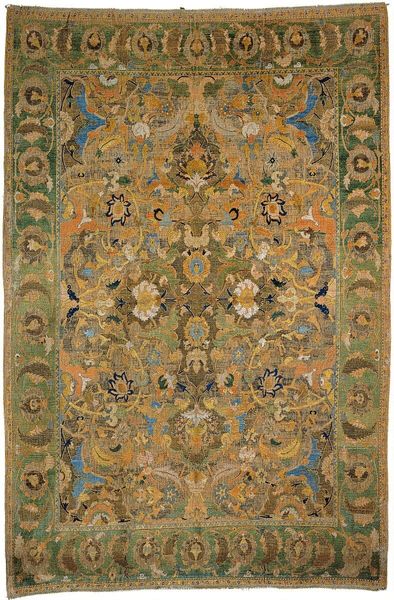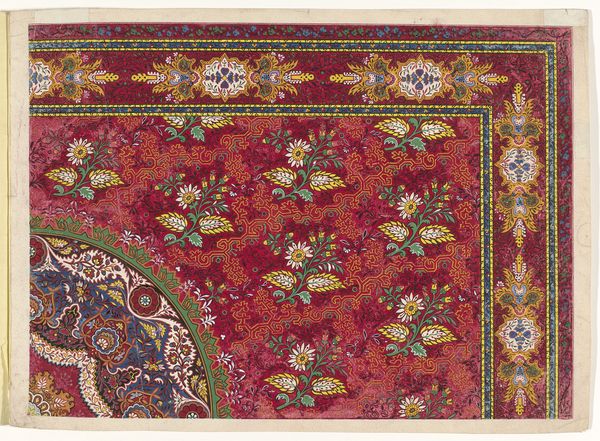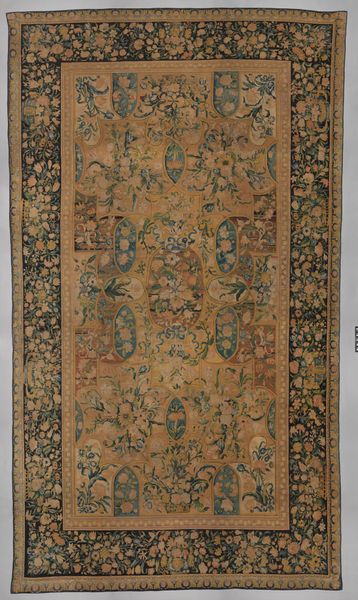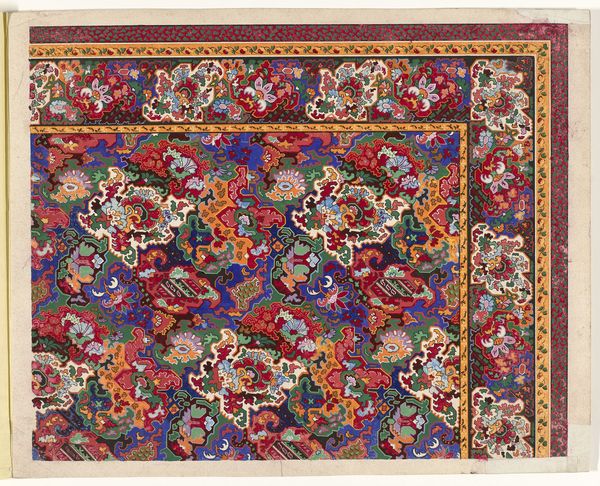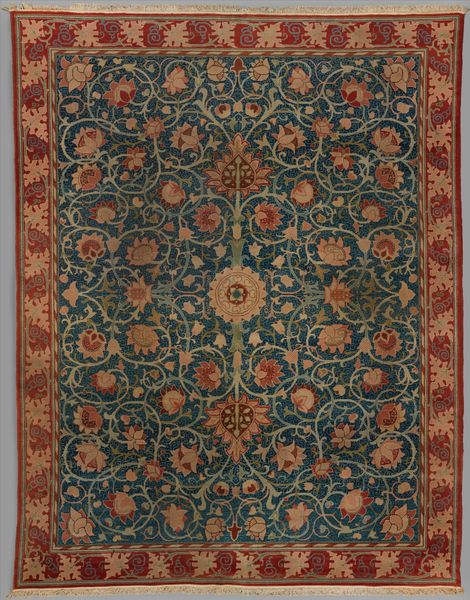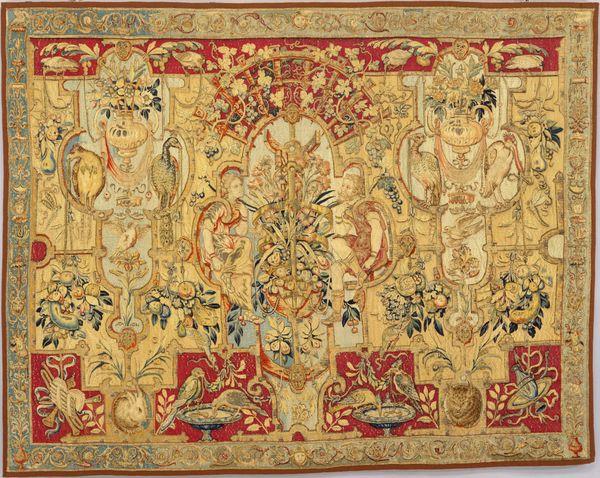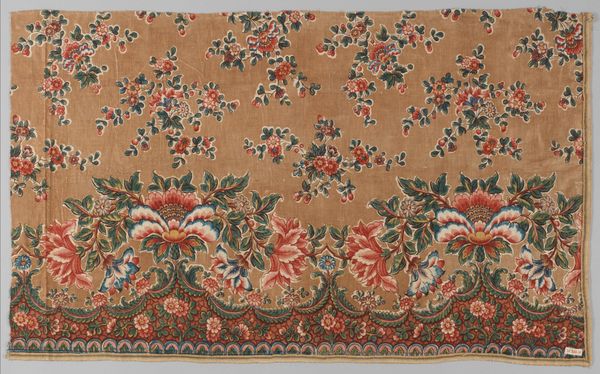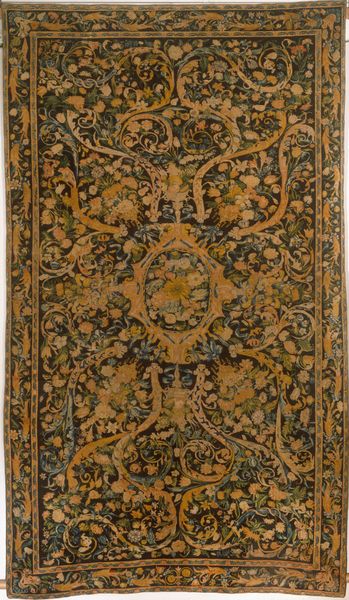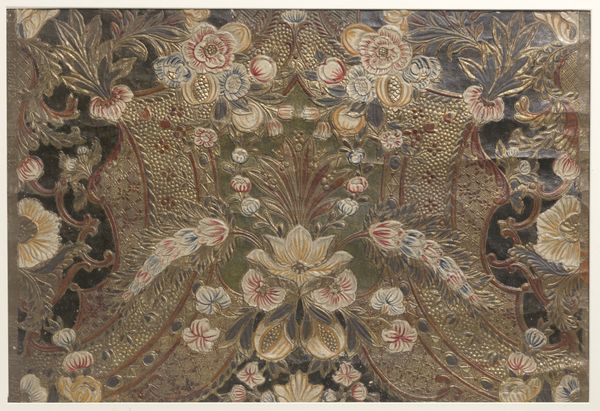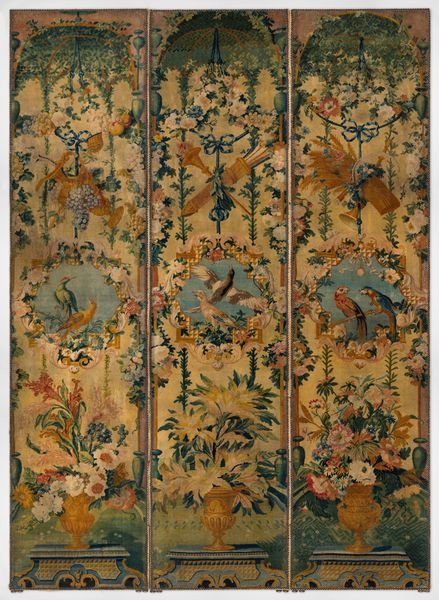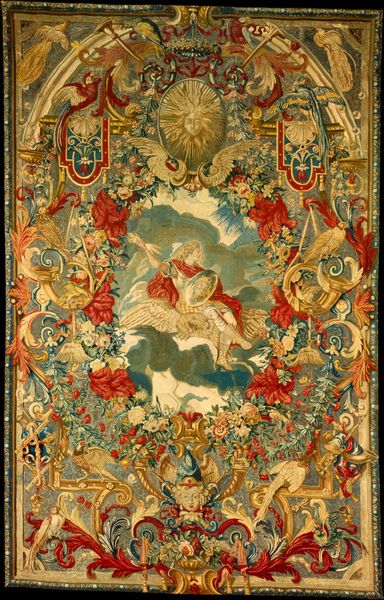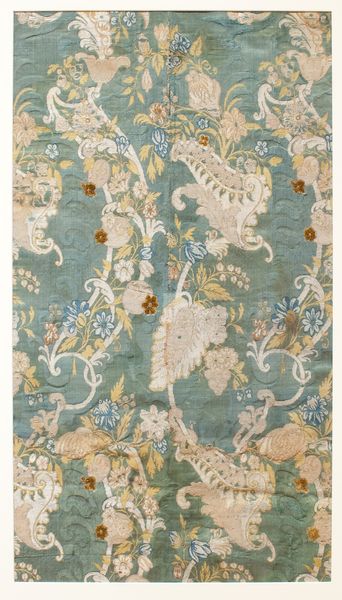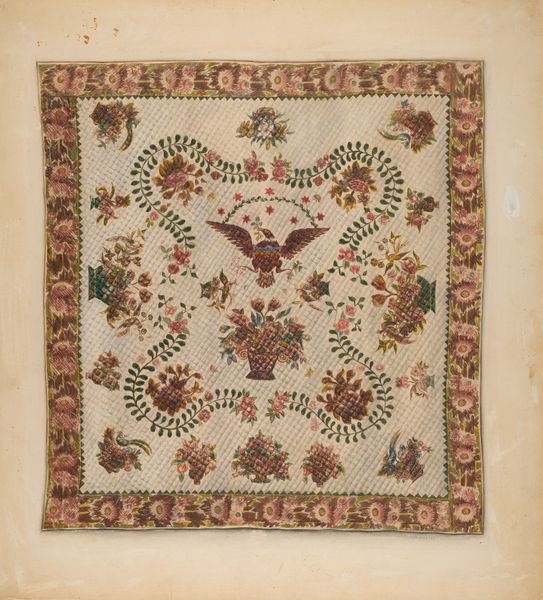
Arabesques from a set of three or more pieces 1720 - 1730
0:00
0:00
weaving, textile, sculpture
#
baroque
#
pattern
#
weaving
#
bird
#
textile
#
flower
#
text
#
pattern background
#
ethnic pattern
#
sculpture
#
earthenware
#
decorative-art
Dimensions: 8 ft. 11 in. × 9 ft. 6 in. (271.8 × 289.6 cm)
Copyright: Public Domain
Curator: Alright, let's dive into this vibrant tapestry, “Arabesques from a set of three or more pieces,” created sometime between 1720 and 1730. You can find it hanging in the Metropolitan Museum of Art. What's your immediate take? Editor: Overflowing! My first thought is, if exuberance could be woven, this is it. The entire surface blooms with flora and fauna in this yellow tone that just pops, it feels like a secret garden spilling out onto the wall. Curator: Indeed. It’s a prime example of Baroque aesthetics, meant to impress. Imagine this displayed in a grand salon of the period. Tapestries like these weren't just decorations; they were symbols of wealth and power. Editor: A power move with petals! I mean, those scrolling acanthus leaves, the little perched birds...it’s trying so hard to say "look at my good taste and resources". Curator: And the resources! Weaving something this complex, on this scale, took considerable skill and time. These tapestries were a collective effort, with workshops employing many specialized weavers. The cost to produce this during the eighteenth century was immense. Editor: I’m also struck by the central vase overflowing with flowers. The composition feels symmetrical, and is it just me, or do these birds feel very artificial? More decoration than depictions of wildlife. Curator: Absolutely! They are less about ornithological accuracy and more about fitting into the overall decorative scheme. It also brings up a question of representation, how the textile served more of a symbolic purpose, showing ideal pastoral scene, not as much representing a scene in its reality. Editor: I do find the use of birds rather captivating as Baroque tropes, it feels slightly bizarre to have parrots and owls together, the exotic versus the nocturnal; one represents visibility while the other secrecy. Curator: An astute point! The combination definitely hints at the complexities beneath the surface of this seemingly simple garden scene. This piece prompts us to examine our relationships with wealth, nature, and artistic expression, no? Editor: I think it reflects an aesthetic so committed to delight that it becomes slightly unnerving, but then, it's been doing its job and making me think about its purpose, hundreds of years after its conception. Curator: A true testament to its staying power and complex message!
Comments
No comments
Be the first to comment and join the conversation on the ultimate creative platform.
